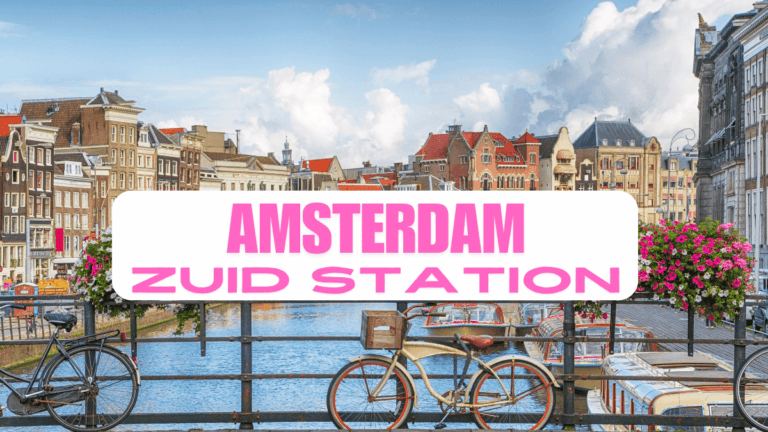7 Stunning Reasons Sitges Is Barcelona’s Best Day Trip
Barcelona’s got everything. The architecture, the food, the energy. But sometimes you need a break from the crowds spilling out of La Rambla, and that’s when Sitges enters the picture. Just 22 miles (35 kilometers) down the coast, this Mediterranean beach town has been pulling in artists, bohemians, and…
Barcelona’s got everything. The architecture, the food, the energy. But sometimes you need a break from the crowds spilling out of La Rambla, and that’s when Sitges enters the picture.
Just 22 miles (35 kilometers) down the coast, this Mediterranean beach town has been pulling in artists, bohemians, and sun seekers since the late 1800s. Getting there is ridiculously easy. Hop on a train from Barcelona Sants or Passeig de Gràcia, and forty minutes later you’re stepping onto palm tree lined streets that smell like salt and grilled sardines.
What Makes Sitges Different
The beaches are the obvious draw. Seventeen of them, actually, stretching along the coast in both directions from the old town. Some are wide and packed with families. Others tuck themselves between rocky outcrops where the water turns that impossible shade of turquoise that looks fake in photos but isn’t.
But Sitges has this other quality that’s harder to pin down. Maybe it’s the white washed buildings catching the afternoon light. Maybe it’s the art galleries tucked down narrow streets, legacy of the Modernist movement that claimed this town over a century ago. The Museu Cau Ferrat alone is worth the trip if you care about Catalan art and the weird, beautiful objects artists collected.
The town also has a reputation for being exceptionally welcoming to LGBTQ+ travelers. It’s been that way for decades, long before it became trendy elsewhere. During Carnival in February, the whole place explodes into one of Europe’s biggest street parties.
Related: ESIM cards for Spain and European Traveling
How to Spend Your Day
Start with breakfast near the church of Sant Bartomeu i Santa Tecla. The church sits on a small hill overlooking the beach, and the views from there set the tone for everything that follows. Wander down to the seafront promenade, where locals jog and tourists stop every few meters to take photos.
For Americans used to the over-the-top sweetness of Starbucks pastries, the breakfast scene here feels refreshingly different. Stop at one of the cafés along Carrer Major and order a café con leche with a croissant that actually tastes like butter, not sugar. Pa amb tomàquet (bread rubbed with tomato, olive oil, and salt) might sound too simple to be interesting, but it’s the kind of thing you’ll find yourself craving weeks after you get home.
Shopping That Actually Matters
The shopping in Sitges beats what you’ll find in Barcelona’s tourist zones because it hasn’t been completely overtaken by the same international chains selling the same stuff everywhere. Sure, there are a few Zara and Mango stores, but the real finds hide in the smaller streets.
Carrer Major and the surrounding lanes are where you want to spend your time. Tiny boutiques sell handmade jewelry, ceramics that look nothing like the mass-produced stuff at Las Ramblas, and clothing from Spanish designers you’ve never heard of. One shop might specialize in vintage sunglasses. The next sells artisan soaps that smell like fig and Mediterranean herbs.
The espadrille shops deserve special attention. Yes, you can buy espadrilles anywhere, but here you’re getting them from places that have been making them for generations. They come in every color combination you can imagine, and at 20 to 40 euros a pair, they’re cheap enough to buy several without feeling guilty.
For food lovers, the small gourmet shops sell Spanish olive oils, local honey, and tins of conservas (preserved seafood) that are genuinely worth packing in your suitcase. The quality blows away anything you’ll find at a U.S. grocery store, and the prices make you wonder why we pay so much for worse versions back home.
Don’t skip the weekend markets if you’re there on Saturday or Sunday. Local artisans set up stalls selling everything from paintings to leather goods to homemade vermouth. It’s the opposite of the frantic souvenir grab in Barcelona. People actually browse. Vendors actually want to tell you about their products.

Where to Eat (The Good Stuff)
Lunch means seafood. The restaurants along Passeig de la Ribera serve everything from simple grilled fish to elaborate paellas. But let me point you toward some specific spots that deliver beyond just a nice view.
La Salseta is the kind of place locals actually go, tucked away from the main beach drag. The menu changes based on what’s fresh, and the portions make American “tapas” restaurants look stingy. Order the grilled octopus if it’s available. It comes out tender with a char that adds just enough smoke without overpowering the flavor.
For something more casual, El Pou sits in a small plaza away from the waterfront chaos. The space feels like someone’s courtyard, with vines growing up the walls and tables packed close together. Their fideuà (like paella but made with short noodles instead of rice) comes with alioli that’s clearly made in-house. The prices run about half what you’d pay for similar quality in Barcelona.
Americans tend to eat dinner early by Spanish standards, which actually works in your favor here. Show up at 7:30pm and you’ll have your pick of tables before the local crowd arrives around 9 or 10. Most restaurants offer a menú del día at lunch (usually three courses with wine for 15 to 20 euros), which is absurdly good value if you’re used to U.S. restaurant prices.
Want something sweet? Forget the gelato shops marketing themselves to tourists. Find Xurreria in the old town and get churros with hot chocolate so thick it’s basically pudding. Go mid-afternoon when the locals take their merienda (snack break). You’ll probably be the only foreigner there, which is always a good sign.
🏖️ Best Beaches
Top spots to enjoy Sitges coastline
| Rank | Beach | Perfect For |
|---|---|---|
| #1 | Playa de la Ribera | Main Sitges beach, lively atmosphere with all amenities nearby |
| #2 | Platja de Balmins | Quieter Sitges escape, crystal clear water and fewer crowds |
| #3 | Playa de San Sebastián | Classic Sitges views with church backdrop, postcard perfect |
Actually Exploring Beyond the Beach
The Maricel Museum and Museu Cau Ferrat sit next to each other overlooking the sea. Combined tickets run about 10 euros, which is nothing compared to what you’d pay for similar museums in the States. The Cau Ferrat was the home and studio of artist Santiago Rusiñol, and it’s filled with the kind of eclectic collection that reveals someone’s actual taste rather than what they thought would impress people. Wrought iron pieces, El Greco paintings, ceramics piled on every surface.
Walk the Passeig Marítim, the seafront promenade that stretches for a couple of kilometers. One end gets you to quieter beaches where the crowd thins out. The other direction takes you past the yacht club and eventually to more residential areas where you can see how people actually live here year round.
The old town’s narrow streets are made for getting lost. Carrer de Parellades, Carrer de Sant Pau, Carrer de Jesús. They twist and turn, occasionally opening into tiny plazas with a fountain or a particularly photogenic doorway covered in bougainvillea. This is Instagram bait, obviously, but it’s also genuinely beautiful in a way that feels effortless.

If you’re into architecture, the Modernist buildings scattered throughout Sitges tell the story of when Barcelona’s wealthy built summer homes here in the late 1800s. They’re not as famous as Gaudí’s work, but they have that same playful quality where buildings look like they grew organically rather than being constructed.
Rent bikes if the beach lounging gets old. Several shops near the train station offer hourly or daily rentals, and the relatively flat coastal path makes it easy, even if you haven’t been on a bike since childhood. You can ride to neighboring towns or just cruise along enjoying the fact that you’re exercising while on vacation, which somehow makes the evening wine feel earned.
🍽️ Top Restaurants
Best dining experiences in Sitges
| Rank | Restaurant | Why Visit |
|---|---|---|
| #1 | La Salseta | Fresh seafood, local favorite in Sitges with rotating seasonal menu |
| #2 | El Pou | Authentic fideuà in charming courtyard setting, beloved Sitges gem |
| #3 | La Nansa | Beachfront paella perfection with stunning Sitges sea views |
The Olivella Option
Here’s where things get interesting. Most visitors treat Sitges as a day trip and head back to Barcelona as the sun sets. But if you want to really slow down and experience the area differently, consider staying in Olivella.
This tiny village sits in the hills about 15 minutes inland from Sitges. It’s the kind of place where locals still gather in the main square and everyone knows everyone. The views stretch from the mountains down to the Mediterranean, and at night the stars actually show up.
There’s a catch, though. You really need a car.
I learned this the hard way. I booked a beautiful place in Olivella thinking I could manage with buses and taxis. Technically, I did manage, but it added a layer of complexity to everything. The local bus runs, but not frequently. Taxis exist, but they may not be readily available in some areas.
That said, if you do have a car, Olivella becomes a fantastic base. You get the peace of the countryside, lower accommodation prices than staying directly in Sitges, and the flexibility to explore other coastal towns like Vilanova i la Geltrú. You can drive down to the beach in the morning, spend the day in Sitges, then retreat to your quiet hillside village for dinner and wine on a terrace overlooking absolutely nothing but nature.
The local restaurants in Olivella serve traditional Catalan food without the tourist markup. You’ll eat better and spend less, assuming you can get there without relying on someone else’s schedule.
Related: Stay in Olivella, Spain – Beautiful Countryside
☕ People Watching Spots
Best places to soak in Sitges life
| Rank | Location | The Scene |
|---|---|---|
| #1 | Plaça Cap de la Vila | Heart of Sitges social life, buzzing cafés and constant parade |
| #2 | Passeig de la Ribera | Beachfront promenade where all of Sitges eventually walks by |
| #3 | Carrer Major | Main shopping street, perfect terrace seats for Sitges watching |
Practical Stuff for Americans
Trains from Barcelona to Sitges run every twenty minutes or so during the day. A round-trip ticket costs under ten euros, which feels impossibly cheap if you’re used to American transit prices. The station drops you right at the edge of town, maybe a five-minute walk from the beaches.
Credit cards work almost everywhere, but having some cash helps at smaller shops and market stalls. ATMs are easy to find, and the fees are generally lower than what you’d pay using airport exchange services.
The pace here runs slower than what most Americans expect. Shops close for siesta. Dinner doesn’t really start until 9pm. Waiters won’t rush you or drop the check without being asked. This can feel weird at first if you’re used to the “turn and burn” mentality of U.S. restaurants, but lean into it. Meals are meant to last.
Related: Spain Visa Options
If you’re visiting in summer, expect company. July and August bring crowds, though nothing compared to Barcelona itself. Spring and fall offer better weather for walking around, and the water stays warm enough for swimming well into October.
Bring good sunscreen. The Mediterranean sun hits different here, especially with the sea breeze making you think you’re not burning when you definitely are.
🛍️ Must-Visit Shops
Unique shopping finds in Sitges
| Rank | Shop | What to Buy |
|---|---|---|
| #1 | Espardenya shops | Traditional Sitges espadrilles in every color imaginable |
| #2 | Mercat Vell boutiques | Local designer clothing and artisan crafts unique to Sitges |
| #3 | Weekend artisan market | Handmade jewelry, ceramics, and Sitges local specialties |
Why It Works
Day trips can feel rushed. You’re always checking the time, making sure you don’t miss the last convenient train back. But Sitges somehow doesn’t feel that way. Maybe because it’s so compact you can see a lot without rushing. Maybe because the whole point of the place is to slow down.
The town has figured out how to be a tourist destination without losing its soul. Yes, there are souvenir shops. Yes, some restaurants are obvious tourist traps. But turn down any random side street and you’ll find locals buying bread, kids playing in small plazas, and that particular rhythm of daily life that exists independent of visitors.
Whether you make it a long day trip from Barcelona or use Olivella as a base to explore the region more deeply, Sitges delivers something the big city can’t quite manage. Space to breathe. Time to sit. Light that makes everything look like a painting.
Just remember to bring your car keys if you’re headed to the hills.







